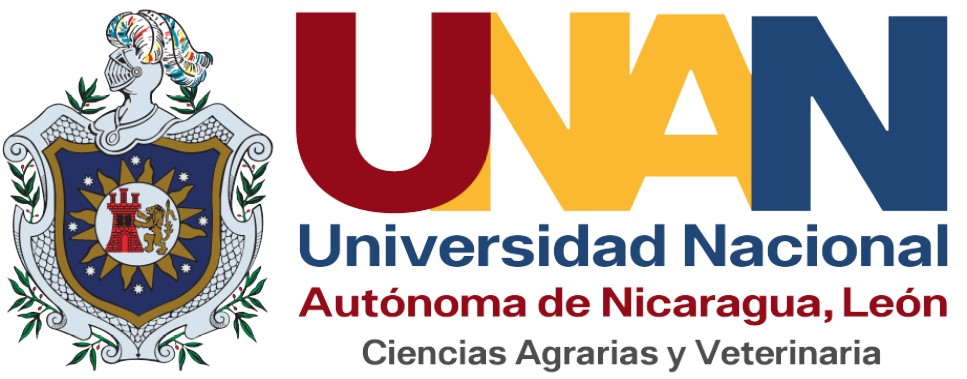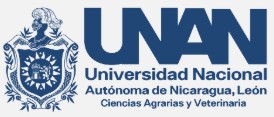The Climate roulette in Bolivia: Vulnerability to uncertainty and its effects on water supply
DOI:
https://doi.org/10.5377/ribcc.v7i14.12810Keywords:
Index of vulnerability to climate change, Drinking water, Climate change, ShapleyAbstract
Bolivia is one of the countries with the highest availability of water in the world; however, it has an annual water deficit that affects 13% of the urban population and 38% of the rural population; Furthermore, it is the country with the lowest storage capacities in water reservoirs in the region. The research analyzes the effects of climate change in the water sector and its impacts on the vulnerability of urban areas of the country. For this purpose, the climate change vulnerability index (CCVI) was used, which applies the Shapley decomposition method that identifies the weighted weights of the CCVI components. Among the findings, it is highlighted that the main change that Bolivia will go through will be the increase in exposure to droughts, which is why it is vitally essential to diversify water sources; Furthermore, given the population increase in the capital cities, the distribution of drinking water and the sewerage system must be improved. Concerning small cities, irrigation and sanitation mechanisms must generate to solve future climate changes. Finally, a water management culture must be generated - reuse of wastewater, moderate use of drinking water, among others. It is vitally important to prioritize these public policies, given that access to drinking water and sanitation is a human right that must be guaranteed for the social and economic development of Bolivia.
Downloads
Metrics
References
Adger, W., Brooks, N., Bentham, G., Agnew, M., & Eriksen, S. (2004). New indicators of vulnerability and adaptative capacity. Tyndall Centre. https://www.ipcc.ch/apps/njlite/ar5wg2/njlite_download2.php?id=7785
Bai, X, R Dawson, D Ürge-Vorsatz, G Delgado, A Barau, S Dhakal, D Dodman, L Leonardsen, V Masson-Delmotte and D Roberts (2018), "Six research priorities for cities and climate change", Nature Vol 555, No 7694, pages 23-25.
https://doi.org/10.1038/d41586-018-02409-z
Barnett, J., Lambert, S., & Fry, I. (2008). The hazards of indicators: insights from the environmental vulnerability index. Annals of the Association of American Geographers, 98(1), 102-119. https://www.tandfonline.com/doi/abs/10.1080/00045600701734315
https://doi.org/10.1080/00045600701734315
Beccari B., (2016) A comparative analysis of disaster risk, vulnerability and resilience composite indicators, PLoS Curr. Disasters 8 1-53 Edition 1.https://pubmed.ncbi.nlm.nih.gov/27066298/
https://doi.org/10.1371/currents.dis.453df025e34b682e9737f95070f9b970
Becker, M. Saisana, P. Paruolo & I. Vandecasteele, (2017) Weights and importance in composite indicators: closing the gap, Ecol. Indicat. 80. https://www.sciencedirect.com/science/article/pii/S1470160X17301759
https://doi.org/10.1016/j.ecolind.2017.03.056
Brooks, N. (2003). Vulnerability, risk and adaptation: A conceptual framework. Tyndall Centre. https://www.ipcc.ch/apps/njlite/srex/njlite_download.php?id=5463
Cortinovis, I., Vella, V., & Ndiku, J. (1993). Construction of a socio-economic index to facilitate analysis of health data in developing countries. Social science & medicine, 36(8), 1087-1097. https://www.sciencedirect.com/science/article/abs/pii/027795369390127P
https://doi.org/10.1016/0277-9536(93)90127-P
Cutter, S. L., Boruff, B. J. and Shirley, W. L. (2003), Social Vulnerability to Environmental Hazards*. Social Science Quarterly, 84: 242-261. doi:10.1111/1540-6237.8402002 https://doi.org/10.1111/1540-6237.8402002
https://doi.org/10.1111/1540-6237.8402002
Cutter, S., Emrich, C., Webb, J., & Morath, D. (2009). Social vulnerability to climate variability hazards: A review of the literature. Oxfam America. https://sompiseth.weebly.com/uploads/4/8/4/8/4848831/literature_review_on_climate_change_vulnerability.pdf
DesInventar: DesInventar (2019)- Inventory system of the effects of disasters, Corporación OSSA, Cali, Colombia, available at: http: //desinventar.org, last access: 10 de enero 2019.
Instituto Mexicano de Competitividad (IMCO). (2012). "Índice de vulnerabilidad Climática". Boletín de prensa. Instituto Mexicano para la Competitividad, A.C. México, D.F. Disponible en: http://imco.org.mx/images/pdf/Boletindeprensa_IVC_final.pdf
Israeli, O. (2007). A Shapley-based decomposition of the R-square of a linear regression. The Journal of Economic Inequality, 5(2), 199-212. https://ideas.repec.org/a/kap/jecinq/v5y2007i2p199-212.html
https://doi.org/10.1007/s10888-006-9036-6
IPCC: McCarthy, J. J., Canziani, O. F., Leary, N. A., Dokken, D. J., & White, K. S. (Eds.). (2001). Climate change 2001: impacts, adaptation, and vulnerability: contribution of Working Group II to the third assessment report of the Intergovernmental Panel on Climate Change (Vol. 2). Cambridge University Press. https://rmets.onlinelibrary.wiley.com/doi/abs/10.1002/joc.775
Mcguire, L., Ford, E., & Okoro, C. (2007). Natural disasters and older US adults with disabilities: implications for evacuation. Disasters, 49-56. Sagarpa. (15 de noviembre de 2011). Sagarpa. Recuperado el 2011 de noviembre de 2011, de Sagarpa: http://www.sagarpa.gob.mx/saladeprensa/boletines2/paginas/2011B698.aspx
https://doi.org/10.1111/j.1467-7717.2007.00339.x
McKenzie, D. (2005). Measuring inequality with asset indicators. J Popul Econ 18, 229-260.
https://doi.org/10.1007/s00148-005-0224-7
Mejía Abel; Uzcátegui Germán y Valverde Osvaldo (2017) Agua y Saneamiento en el Estado Plurinacional de Bolivia, Buenos Aires- Argentina, CAF
Ministerio de Economía y Finanzas Públicas & Ministerio de Planificación del Desarrollo (MEF/MPD) (2017). Inversión del Gobierno Nacional en agua potable, saneamiento básico, recursos hídricos y riego. https://medios.economiayfinanzas.gob.bo/MH/documentos/2016/agosot/SEPARATA_MIN_ECONOMIA_baja.pdf
Nguefack‐Tsague, G., Klasen, S., & Zucchini, W. (2011). On weighting the components of the human development index: a statistical justification. Journal of human development and capabilities, 12(2), 183-202.https://econpapers.repec.org/article/tafjhudca/v_3a12_3ay_3a2011_3ai_3a2_3ap_3a183-202.htm
https://doi.org/10.1080/19452829.2011.571077
Novelo-Casanova D.A. & G. Suarez, (2015) Estimation of the risk management index (RMI) using statistical analysis, Nat. Hazards 77. https://link.springer.com/article/10.1007/s11069-015-1663-4
https://doi.org/10.1007/s11069-015-1663-4
OECD, (2008). Handbook on Constructing Composite Indicators: Methodology and User Guide, OECD Publications, Paris.https://www.oecd.org/sdd/42495745.pdf https://doi.org/10.1007/s11069-015-1663-4
https://doi.org/10.1007/s11069-015-1663-4
Ishizawa, Oscar A., Miranda, J.J., Jiménez, L. F., Villamil, A., Lv, X., Jardillier, R.P.J., & de Haro López, I., (2017). "Quantitative Analysis of the Impact of Floods in Bolivia," World Bank Other Operational Studies 29043, The World Bank.
Rangecroft,, S., Harrison, S., & Anderson, K. (2015) Rock Glaciers as Water Stores in the Bolivian Andes: An Assessment of Their Hydrological Importance, Arctic, Antarctic, and Alpine Research, 47:1, 89-98,
https://doi.org/10.1657/AAAR0014-029
Sanders, K; Miranda, J y Olivera, S. (2019) Desarrollando un índice multidimensional de vulnerabilidad a las contingencias climáticas y al cambio climático de los sistemas urbanos. Banco Mundial.
Shapley, L. (1953): A value for n-person games, in: H. W. Kuhn and A. W. Tucker, eds., Contributions to the Theory of Games, Vol. 2 (Princeton University Press). https://doi.org/10.1515/9781400881970-018
https://doi.org/10.1515/9781400881970-018
Shorrocks, A.F.: Decomposition Procedures for Distributional Analysis: A Unified Framework Based on the Shapley Value (mimeo). University of Essex (1999). http://www.komkon.org/~tacik/science/shapley.pdf
World Bank. (2019). The World Bank Group Action Plan on Climate Change Adaptation and Resilience. Washington, DC: World Bank. http://documents1.worldbank.org/curated/en/519821547481031999/The-World-Bank-Groups-Action-Plan-on-Climate-Change-Adaptation-and-Resilience-Managing-Risks-for-a-More-Resilient-Future.pdf
Zaiontz, (2017): Shapley-Owen Decomposition Tools and Applications. https://www.real-statistics.com/multiple-regression/shapley-owen-decomposition/
World Bank. 2013 ."Potsdam Institute for Climate Impact Research and Climate Analytics. 2013. Bajemos la temperatura : fenómenos climáticos extremos, impactos regionales y posibidades de adaptación - resumen ejecutivo. Washington, DC: World Bank. © World Bank. https://openknowledge.worldbank.org/handle/10986/14000 License: CC BY-NC-ND 3.0 IGO."
World Resource Institute. 2017. Iceland Water Stress is Helping Drive Conflict and Migration.. https://www.wri.org/insights/water-stress-helping-drive-conflict-and-migration
DESINVENTAR. 2015. Base de Datos Bolivia. https://www.desinventar.net/DesInventar/profiletab.jsp?countrycode=bol&continue=y
COMBAZ, E., 2007 - Le relogement des populations sinistrées de la municipalité de La Paz. Contextes, évolutions, et impacts des pratiques de relogement de trois catastrophes : la granizada (2002), Llojeta (2003) et German Jordan (1997), 107 pp. Mémoire de Master 1 de Géographie, mention Sciences géographiques, spécialité Mondialisation et développement, Université de Aix-Marseille 1.
GMLP, 2007 - Catálogo de instrumentos en gestión municipal para la reducción de riesgos y preparación ante emergencias, 74 pp.; La Paz: PNUD.
VILLEGAS, S. (ed.), 2002 - Memoria del «Martes Negro». ¡Emergencia por granizada en La Paz!, 59 pp.; La Paz GMLP:, Comisión episcopal de pastoral social CARITAS.
Fundacion de amigos de la Naturaleza. 2019. Memoria (2019) - FAN. https://issuu.com/fundacionamigosdelanaturaleza/docs/memoria-fan2019_
HARDY, S., 2009 - Explorer la construction de la résilience. Expériences de recherche à La Paz. In: Vulnérabilités sociétales, risques et environnement (A. Pelier & S. Becerra, eds.): 469-482; París: Éditions L'Harmattan.
Downloads
Published
How to Cite
License
Copyright (c) 2021 Ibero-american JournalL of Bioeconomy and Climate Change e-ISSN 2410-7980

This work is licensed under a Creative Commons Attribution-NonCommercial-ShareAlike 4.0 International License.
Copyright © 2025 Rev. iberoam. bioecon. climate change. National Autonomous University of Nicaragua León (UNAN-León), Knowledge Area of Agrarian and Veterinary Sciences / Specific Area of Agroecology and Agribusiness / Center for Research in Agrarian Sciencies. Academic Directorate. Research Department. Publication and scientific events Unit.












 EDITORIAL
EDITORIAL e-ISSN
e-ISSN


 COPYRIGHT
COPYRIGHT This work is licensed under a Licencia Internacional
This work is licensed under a Licencia Internacional 












